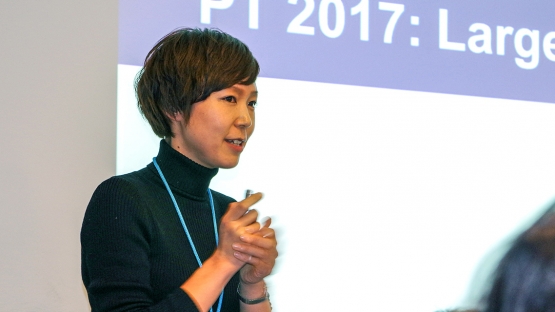In February 2017, the IAEA hosted a three day data evaluation workshop[1] in follow up to an earlier goal oriented proficiency test at its headquarters in Vienna, Austria, helping to build capacities in Member States from the Europe region in measuring low-activity radio-caesium[2] in freshwater. The workshop was attended by 34 participants from European and Japanese laboratories with experience in the radiochemical enrichment of caesium and the measurement of low activity by gamma-ray spectrometry.
The workshop aimed to build capacity in the detection of radio-caesium isotopes 134 and 137(Cs). These isotopes are present in small amounts in the environment, as a result of human activities. As these isotopes can have an adverse effect on human health, it is important to be able to detect above average radio-caesium levels in freshwater to ensure safe drinking water. The volume of radio-caesium transfer by freshwater is necessary to understand the behaviour of these isotopes, especially when it comes to the remediation of contaminated agricultural areas following nuclear emergencies. The information gathered and analysed through the proficiency test and the workshop helps to optimise hypothetical remediation work and facilitates safe agricultural production.
Participants took part in a proficiency test[3] on the determination of Cs-134 and Cs-137 isotopes in river samples from Japan and the Danube in Austria before the data evaluation workshop. This opportunity was highly appreciated by the participants, as they were then able to discuss the test results.
In general, the concentration of radio-caesium in freshwater is at a very low level – posing no risk to humans. To measure present concentrations of radio-caesium, laboratories use a special enrichment method. The workshop also enabled participants to exchange their experiences on the chemical enrichment of radio-caesium, and to identify the most appropriate radio-caesium enrichment technique as a recommended method.
Japan supported the exercise by conducting the sampling campaign and shipping the large volume water sample free of charge to the IAEA, as well as by supporting the participation of international experts. The workshop was developed and carried out in close cooperation with the following Japanese institutions: the University of Tsukuba, the Center for Research in Isotopes and Environmental Dynamics; the National Institute of Advanced Industrial Science and Technology (AIST); the Tohoku Agricultural Research Center, NARO; the National Institute for Environmental Studies; and the Consortium for Monitoring of Radio-Cs in Water. The technical support for the proficiency test was provided by the NAEL Terrestrial Environment Laboratory of IAEA.





